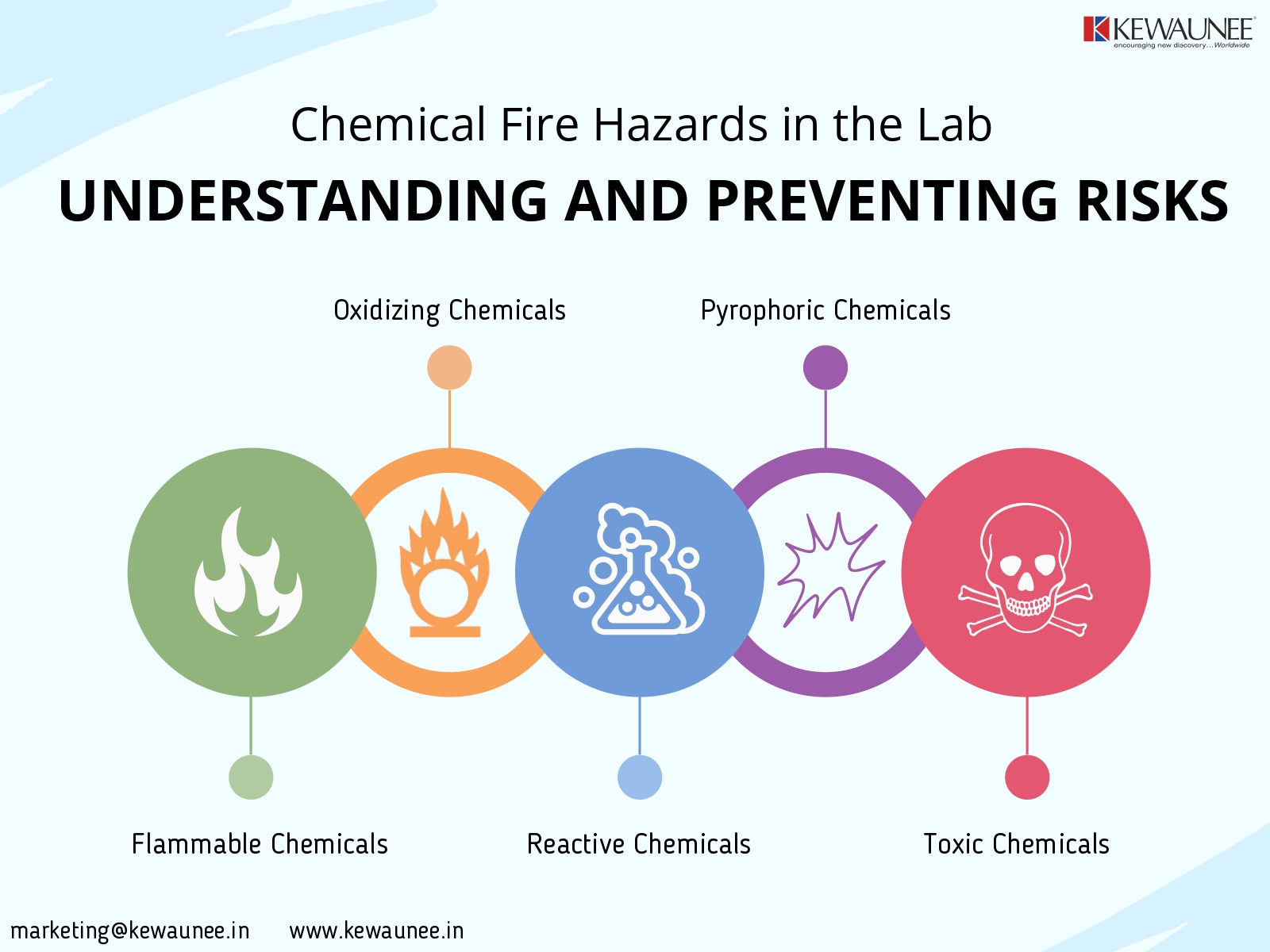Chemical Fire Hazards in the Lab: Understanding and Preventing Risks
As scientists, researchers, and students, working in a laboratory is a part of everyday life. However, it’s essential to understand the potential fire hazards associated with different types of chemicals used in the laboratory. Not only does it help ensure the safety of everyone working in the lab, but it also helps prevent the loss of valuable research and equipment.
In this blog, we’ll be discussing the different types of chemicals that are commonly used in a laboratory and the potential fire hazards associated with them. We’ll also cover prevention and control measures that can be taken to minimize the risk of a fire in the lab.
Flammable Chemicals
Flammable chemicals are substances that can ignite easily and burn quickly. Common flammable chemicals used in a laboratory include ethanol, acetone, and methanol. Flammable chemicals can ignite due to various reasons, such as sparks from electrical equipment, static electricity, or heat sources.
To prevent a fire when handling flammable chemicals, it’s essential to follow these control measures:
- Store flammable chemicals in approved containers in designated areas.
- Avoid exposing flammable chemicals to heat sources or open flames.
- Use appropriate personal protective equipment (PPE), such as gloves and safety glasses.
- Ensure proper ventilation in the lab to avoid the buildup of flammable vapors.
Oxidizing Chemicals
Oxidizing chemicals are substances that can release oxygen and increase the risk of fire. Examples of oxidizing chemicals used in a laboratory include hydrogen peroxide and nitric acid. When oxidizing chemicals come into contact with flammable or combustible materials, they can rapidly ignite.
To prevent a fire when handling oxidizing chemicals, it’s essential to follow these control measures:
- Store oxidizing chemicals separately from flammable chemicals.
- Use proper ventilation to prevent the buildup of oxidizing vapors.
- Avoid spilling oxidizing chemicals and keep them away from flammable materials.
- Use appropriate PPE when handling oxidizing chemicals.
Reactive Chemicals
Reactive chemicals are substances that can undergo a chemical reaction, releasing heat, gas, or other hazardous materials. Examples of reactive chemicals used in a laboratory include sodium and potassium. Reactive chemicals can easily ignite or explode, especially when exposed to water or other chemicals.
To prevent a fire when handling reactive chemicals, it’s essential to follow these control measures:
- Store reactive chemicals in designated areas, away from other chemicals.
- Use proper ventilation to prevent the buildup of reactive vapors.
- Follow proper handling procedures when using reactive chemicals.
- Keep reactive chemicals away from water or other reactive chemicals.
Pyrophoric Chemicals
Pyrophoric chemicals are substances that can ignite spontaneously in air. Examples of pyrophoric chemicals used in a laboratory include sodium, potassium, and phosphorus. Pyrophoric chemicals can ignite when exposed to air or even when in contact with moisture.
To prevent a fire when handling pyrophoric chemicals, it’s essential to follow these control measures:
- Store pyrophoric chemicals in sealed containers to prevent exposure to air and moisture.
- Handle pyrophoric chemicals with caution and avoid exposing them to heat or friction.
- Use appropriate PPE when handling pyrophoric chemicals.
- Ensure proper ventilation in the lab to avoid the buildup of pyrophoric vapors.
Toxic Chemicals
Toxic chemicals are substances that can cause harm when ingested, inhaled, or come into contact with skin. Examples of toxic chemicals used in a laboratory include formaldehyde and hydrogen cyanide. Toxic chemicals can also pose a fire hazard if they come into contact with other chemicals or materials.
To prevent a fire when handling toxic chemicals, it’s essential to follow these control measures:
- Store toxic chemicals in designated areas, away from other chemicals.
- Use appropriate PPE when handling toxic chemicals
- Ensure proper ventilation in the lab to avoid the buildup of toxic vapors.
- Follow proper handling procedures when using toxic chemicals.
- Avoid using toxic chemicals near open flames or heat sources.
Conclusion
In conclusion, understanding the potential fire hazards associated with different types of chemicals used in a laboratory is crucial for the safety of everyone working in the lab. It’s essential to follow proper storage, handling, and control measures when working with flammable, oxidizing, reactive, pyrophoric, and toxic chemicals. By doing so, we can minimize the risk of a fire in the laboratory and ensure the safety of ourselves and others.
Remember to always wear appropriate PPE, such as gloves and safety glasses, when handling chemicals. If a fire does occur, activate the nearest fire alarm, evacuate the building immediately, and call emergency services.
As responsible lab users, we must prioritize safety in everything we do to prevent any accidents or hazards. By understanding the potential fire hazards associated with different types of chemicals used in a laboratory and taking proper precautions, we can make sure that we can conduct our experiments safely and successfully.
Comments are closed.











